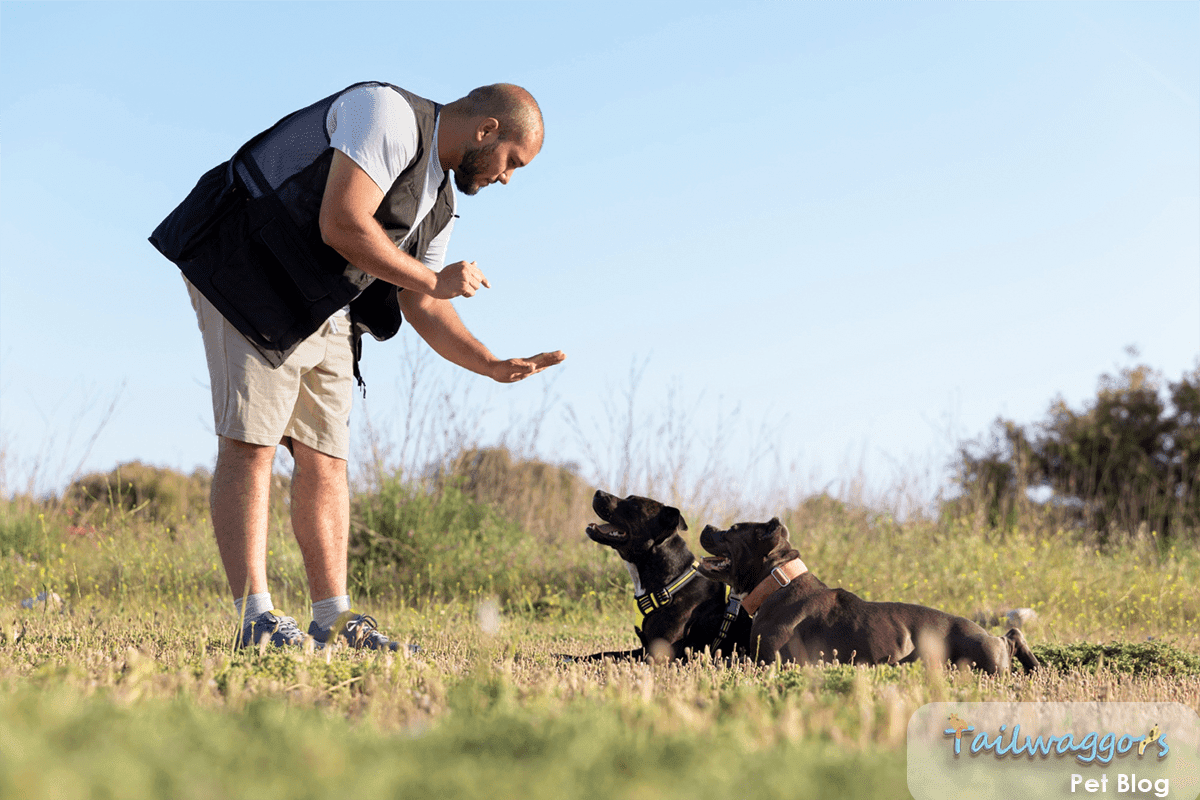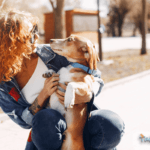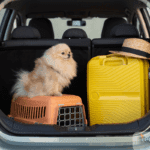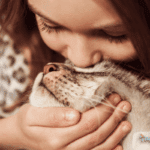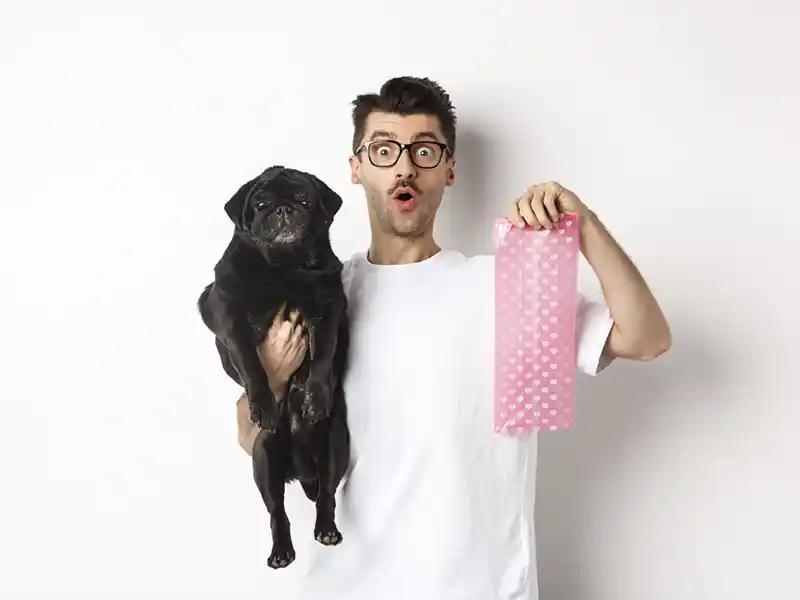Introduction
Training your dog is more than just teaching commands—it’s about creating a partnership built on trust, communication, and mutual respect. Whether you’re a first-time pet parent or an experienced dog owner, effective training is the foundation for a happy, safe, and harmonious relationship with your furry companion.
But dog training often comes with challenges. From leash pulling to managing distractions, every pet parent has experienced moments of frustration. The good news? With the right techniques, tools, and mindset, training can become an enjoyable journey for both you and your dog.
In this comprehensive guide, we’ll explore everything you need to know about dog training: the science behind positive reinforcement, step-by-step instructions for essential commands, troubleshooting common challenges, and much more. By the end, you’ll have the confidence to train your dog effectively and strengthen your bond like never before.
Training isn’t about perfection; it’s about progress. Each session is an opportunity to learn, grow, and connect with your dog,” says Dr. Esther Knoetze, BSc, BVSc.
Why Dog Training Matters
Dog training goes far beyond teaching obedience—it’s about creating a shared language that fosters trust, reduces stress, and ensures safety. Let’s explore why training is a cornerstone of responsible pet ownership.
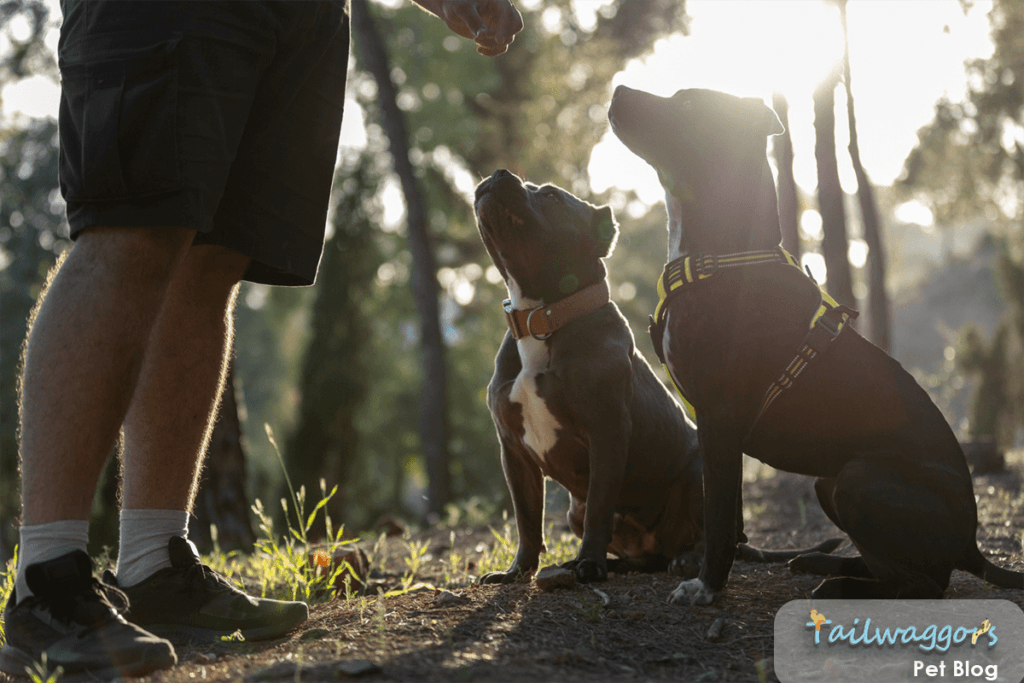
Benefits of Dog Training
- Strengthened Bond
- Training enhances communication, allowing you to understand your dog’s needs and behavior better. It fosters mutual trust and deepens your relationship.
- 🐾Example: Teaching the “Stay” command helps establish boundaries while reinforcing your leadership.
- Mental Stimulation
- Dogs thrive on mental challenges. Training keeps their minds sharp, preventing boredom and reducing destructive behaviors.
- 🐶 Pro Tip: Incorporate scent games or puzzle toys into training sessions to engage their problem-solving skills.
- Improved Behavior
- Addressing common problems like leash pulling, barking, or jumping becomes easier with consistent training.
- 🐾Scenario: A well-trained dog can greet visitors calmly, enhancing their social interactions.
- Enhanced Safety
- Commands like “Come” and “Leave It” can prevent accidents, ensuring your dog’s safety in potentially dangerous situations.
- Statistic: According to a study by the Journal of Veterinary Behavior, dogs trained using recall commands were 80% more likely to avoid off-leash accidents.
- Reduced Stress for Pet Parents
- A well-trained dog minimizes frustration, making daily life smoother and more enjoyable.
- 🩺Quote: “A trained dog isn’t just obedient—they’re happier, healthier, and more confident in their environment,” says Dr. Knoetze.
Learn more about creating a deeper connection with your dog in our guide: Deepening the Bond: 7 Proven Strategies to Strengthen Your Connection with Your Pet.
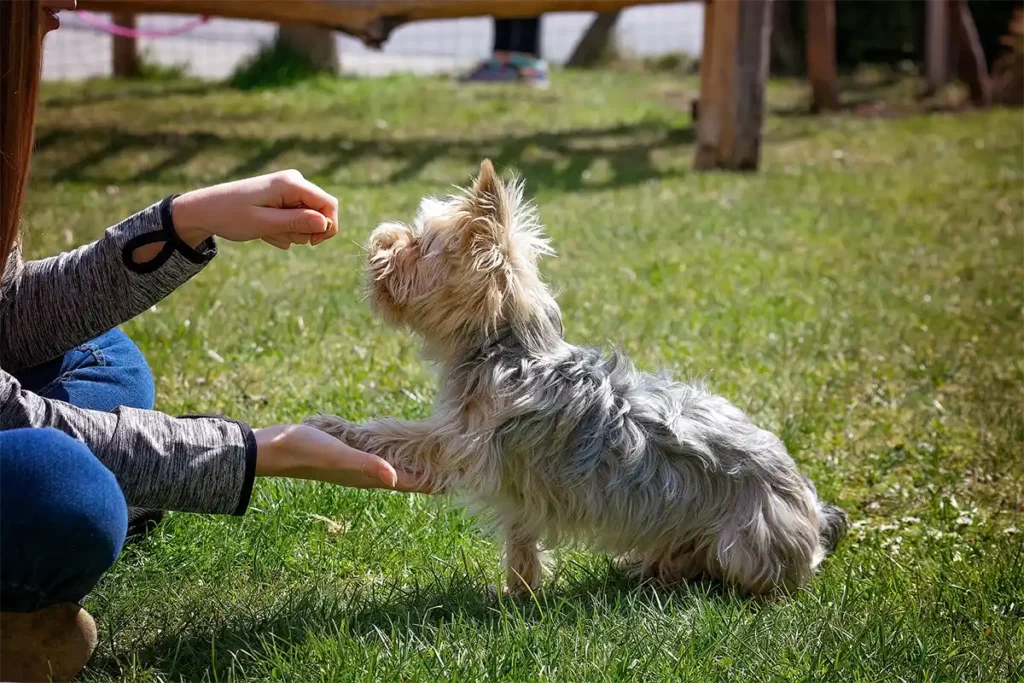
The Science Behind Positive Reinforcement
Positive reinforcement is the cornerstone of modern dog training, and for good reason—it’s backed by decades of research. Here’s why this method works:
1. Encourages Desired Behaviors
- Rewarding good behavior with treats, toys, or praise motivates your dog to repeat those actions.
2. Reduces Anxiety
- Unlike punishment-based methods, positive reinforcement creates a stress-free learning environment, improving your dog’s focus and confidence.
3. Universal Applicability
- This method works across all breeds and temperaments, from high-energy Border Collies to independent Shiba Inus.
Quick Tips for Positive Reinforcement
- Timing is Everything: Reward your dog immediately after the desired behavior for a clear association.
- Use High-Value Rewards: Identify what your dog loves most—whether it’s chicken, toys, or verbal praise—and use it as a motivator.
- Be Consistent: Use the same cues, rewards, and gestures during training to avoid confusion.
Read more about fostering positive behaviors with science-backed methods.
Key Benefits of Dog Training
Training
Behavior
Safety
Bonding
Strengthens your relationship with your dog.
Mental Stimulation
Keeps your dog’s mind sharp and engaged.
Safety
Prevents accidents with key commands.
Behavior Improvement
Reduces undesirable habits like barking or jumping.
“Training isn’t just about obedience—it’s about building a happier, safer, and more fulfilling life with your dog.”
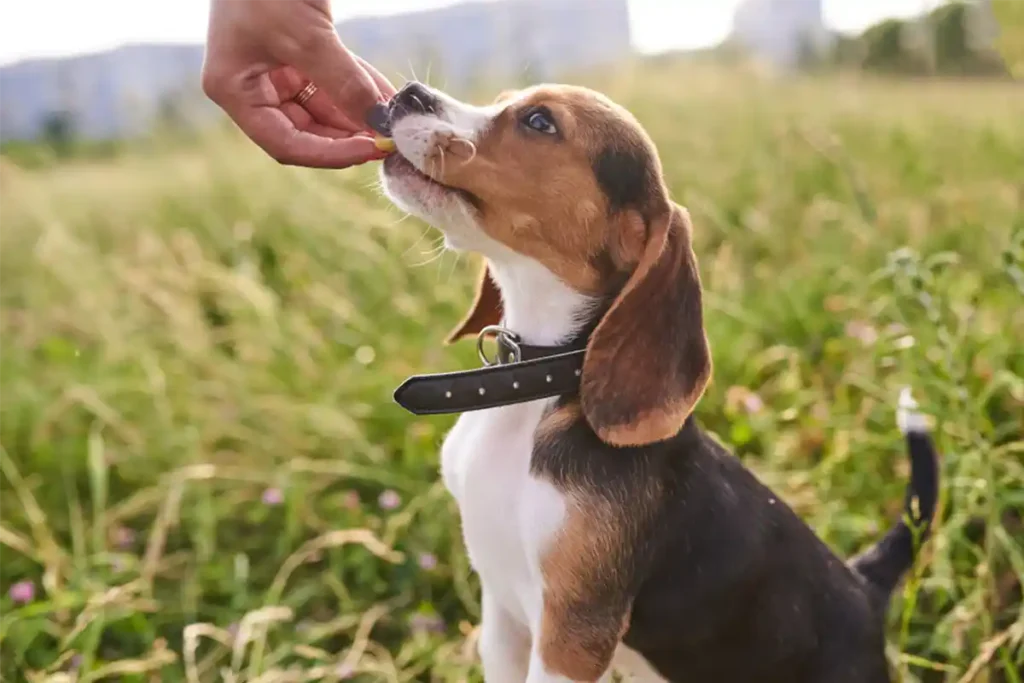
Mastering Essential Commands
Training your dog in essential commands is a cornerstone of good behavior, safety, and mutual respect. These commands form the building blocks of your dog’s understanding, making everyday interactions smoother and strengthening your relationship.
Core Commands Every Dog Should Know
1. Sit
- Why It’s Important: The “Sit” command helps manage your dog’s excitement and establishes control in various situations, such as greeting guests or waiting for meals.
- Step-by-Step Guide:
- Hold a treat close to your dog’s nose.
- Slowly move your hand upward, allowing their head to follow the treat while their bottom lowers.
- Once they sit, immediately say “Sit,” give the treat, and offer praise.
- Scenario: Use “Sit” to prevent jumping when visitors arrive or during leash clipping.
2. Stay
- Why It’s Important: Ensures your dog remains in place, enhancing safety in crowded or high-risk areas like parks or streets.
- Step-by-Step Guide:
- Ask your dog to “Sit.”
- Hold your palm out and firmly say “Stay.”
- Take one step back, then return to reward if your dog remains still.
- Gradually increase the distance and duration over time.
- 🐶 Pro Tip: Always return to your dog before rewarding to reinforce staying in place.
3. Come (Recall)
- Why It’s Important: The recall command is essential for off-leash activities and emergencies, ensuring your dog returns to you promptly.
- Step-by-Step Guide:
- Attach a long leash to your dog for safety.
- Use an enthusiastic tone to say their name, followed by “Come.”
- Reward immediately with treats and praise when they approach you.
- 🐾Scenario: Recall is especially useful at dog parks or during hikes.
A strong recall can save lives. Practice in controlled environments before advancing to areas with distractions,” advises Dr. Esther Knoetze, BSc, BVSc.
4. Leave It
- Why It’s Important: Prevents your dog from picking up harmful or unwanted items, ensuring their safety.
- Step-by-Step Guide:
- Place a treat in one hand and firmly say “Leave It.”
- When your dog ignores the treat, reward them with a different treat from your other hand.
- Gradually introduce distractions to reinforce the command.
- 🐾Scenario: Use “Leave It” during walks to prevent your dog from grabbing unsafe items like food scraps or trash.
Find out how to avoid common toxic items your dog may encounter: Toxic Plants for Dogs: A Comprehensive Vet-Approved Reference Guide.
Advanced Commands for Enrichment
1. Heel
- Why It’s Important: Encourages calm walking beside you, minimizing pulling and maintaining control.
- Step-by-Step Guide:
- Use a short leash and hold a treat in your hand at your side.
- Say “Heel” and begin walking, rewarding your dog when they stay beside you.
- Gradually phase out treats as the behavior becomes consistent.
- 🐶Pro Tip: Practice indoors or in low-distraction environments before progressing to busy streets.
2. Wait
- Why It’s Important: Manages your dog’s excitement before crossing streets, entering rooms, or receiving food.
- Step-by-Step Guide:
- Ask your dog to “Sit.”
- Hold your palm out and say “Wait.”
- Release them with a word like “Okay” after a few seconds, then reward.
- 🐾Scenario: Use “Wait” at doorways to prevent dashing out unexpectedly.
3. Fetch
- Why It’s Important: Combines physical exercise with mental stimulation, making it ideal for high-energy breeds.
- Step-by-Step Guide:
- Start with a toy your dog loves and throw it a short distance.
- Say “Fetch” as they retrieve it, rewarding them when they bring it back.
- Gradually increase the distance as they become more comfortable.
- 🐶Pro Tip: Use a tug toy to teach a “Drop It” command for seamless gameplay.
Advanced commands like ‘Heel’ or ‘Wait’ not only enrich training but also provide mental challenges tailored to your dog’s unique energy level,” says Dr. Knoetze.
Troubleshooting Common Issues
Resistance to Commands:
- Solution: Break commands into smaller steps and use higher-value rewards like chicken or cheese.
- 🐾Example: If your dog struggles with “Down,” reward partial movements like lowering their head.
Distractions:
- Solution: Start in a quiet environment and gradually introduce distractions as your dog improves.
- 🐾Scenario: Practice “Stay” indoors before trying it at a park.
Lack of Focus:
- Solution: Keep sessions short (5–10 minutes) and engaging to maintain your dog’s attention.
Top Commands Every Dog Should Master
Sit
Hand Signal:
Palm up, move hand upward
Quick Fixes:
- Use high-value treats at first
- Keep training sessions short
- Practice in quiet areas initially
Stay
Hand Signal:
Palm out, facing dog
Quick Fixes:
- Start with short durations
- Gradually increase distance
- Return to reward, don’t call dog
Come
Hand Signal:
Pat leg or sweep arm toward you
Quick Fixes:
- Use excited, happy voice
- Practice with long leash first
- Always reward when they come
Leave It
Hand Signal:
Palm down, crossing motion
Quick Fixes:
- Start with boring items
- Reward with better treat
- Practice with items at distance
“Mastering basic commands isn’t just about obedience—it’s about creating trust and communication.”
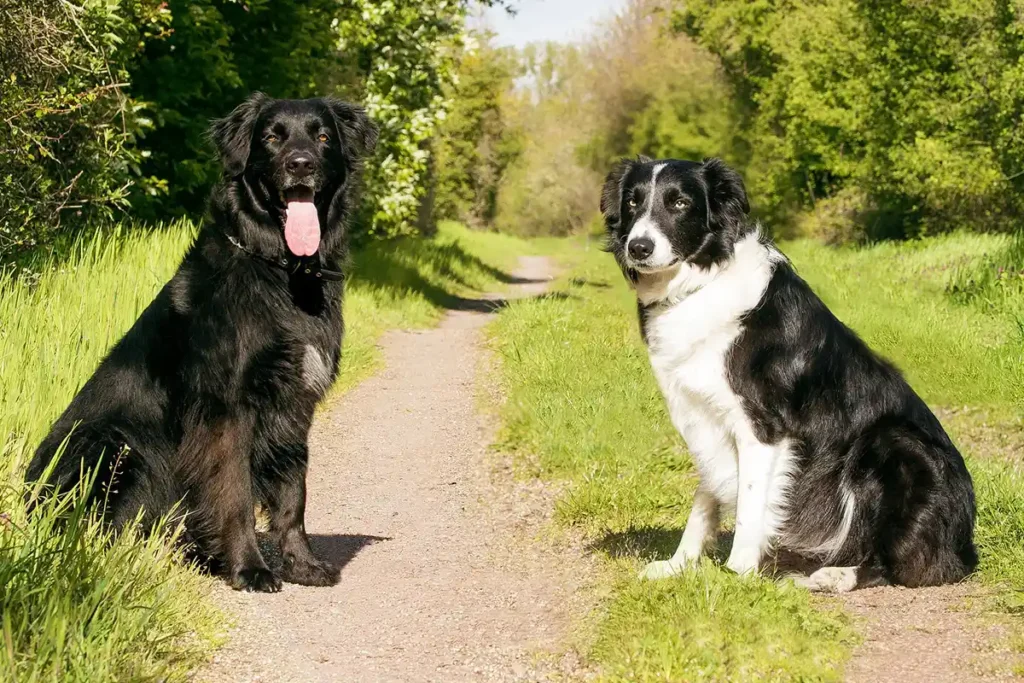
Building a Dog-Friendly Training Routine
A structured training routine is the foundation for a well-behaved and happy dog. Consistency, balanced activities, and adaptability to your dog’s unique needs are crucial for long-term success. In this section, we’ll explore how to design a daily training schedule that incorporates physical exercise, mental stimulation, and time for relaxation.
Creating a Daily Training Plan
Morning Routine
Walk and Exercise:
- Start the day with a 30-minute brisk walk or play session to burn off excess energy.
- 🐾Example: High-energy breeds like Australian Shepherds may benefit from additional agility exercises or jogging alongside you.
Command Practice:
- Use your walk to reinforce basic commands like “Sit,” “Stay,” and “Heel.”
- 🐾Scenario: At traffic lights, use “Stay” to teach patience and safety.
Mental Stimulation:
- Incorporate games like hide-and-seek or sniff-and-find to engage their problem-solving skills before breakfast.
Dogs with separation anxiety can benefit greatly from structured routines. Learn how to manage anxiety here: Understanding Separation Anxiety in Dogs.
Afternoon Routine
Short Training Sessions:
- Dedicate 10–15 minutes to teaching a new command or refining advanced ones like “Wait” or “Fetch.”
- Gradually increase distractions to improve focus.
Interactive Toys:
- Use puzzle feeders, snuffle mats, or treat-dispensing toys to keep your dog engaged while you’re busy.
- Example: A Kong filled with frozen peanut butter provides both mental stimulation and a rewarding challenge.
Evening Routine
Command Review:
- Spend 10 minutes reviewing commands learned earlier in the day to reinforce consistency.
- Scenario: Practice “Come” and “Leave It” in low-distraction settings, gradually increasing challenges.
Calming Activities:
- Wind down with soothing activities like brushing or light petting.
- Pro Tip: Incorporate massage techniques to relax your dog before bedtime.
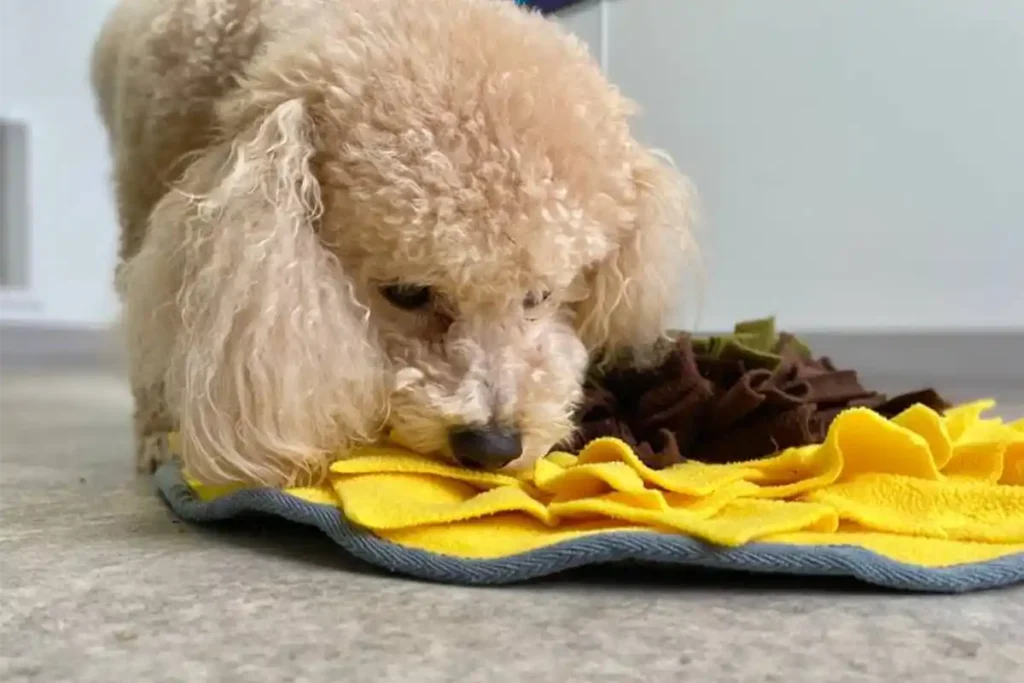
Balancing Physical and Mental Stimulation
Every dog thrives on a mix of physical activity and mental engagement. The key is to tailor the balance to your dog’s age, breed, and personality.
- Physical Stimulation:
- Activities like walking, running, fetch, or agility training release pent-up energy.
- 🐶Tip: For puppies, keep play sessions shorter but more frequent to match their attention spans.
- Mental Stimulation:
- Tasks like learning new commands, using puzzle toys, or playing scent games keep your dog’s mind sharp.
- 🐾Scenario: Hide treats around your home and encourage your dog to find them using their nose.
Mental stimulation is as vital as physical exercise. Engaging a dog’s brain can reduce problem behaviors caused by boredom,” explains Dr. Esther Knoetze, BSc, BVSc.
Troubleshooting Training Challenges
Resistance to Routine:
- Solution: Introduce new elements gradually and keep sessions positive and rewarding.
- 🐾Example: If your dog resists “Stay,” reward smaller increments of staying still before increasing duration.
Distractions During Training:
- Solution: Begin training in a quiet environment and gradually introduce mild distractions as your dog progresses.
- 🐾Scenario: Start practicing “Heel” indoors, then move to a quiet park before attempting busy streets.
Low Motivation:
- Solution: Use high-value rewards, like their favorite treat or toy, and adjust session times to when your dog is naturally more energetic.
Sample Training Schedule
| Time | Activity | Purpose |
|---|---|---|
| Morning | Walk and basic commands | Physical exercise and command reinforcement |
| Late Morning | Puzzle toy or scent game | Mental stimulation |
| Afternoon | Short training session (new command) | Skill-building and focus improvement |
| Evening | Review session and calming activity | Reinforcement of learning and relaxation |
Track Your Dog’s Progress
Week of:
Daily Tasks
Morning Routine
Afternoon Training
Evening Review
Weekly Progress
Training Notes & Milestones
A Balanced Day for Your Dog
Morning
Morning Walk
30-minute exercise session
Basic Commands
Practice sit, stay during walk
Afternoon
Puzzle Time
Interactive toy play
Training Session
15-minute focused practice
Evening
Command Review
Review daily learnings
Calm Time
Relaxation and bonding
“Consistency is key. A well-rounded routine meets your dog’s physical and mental needs.”
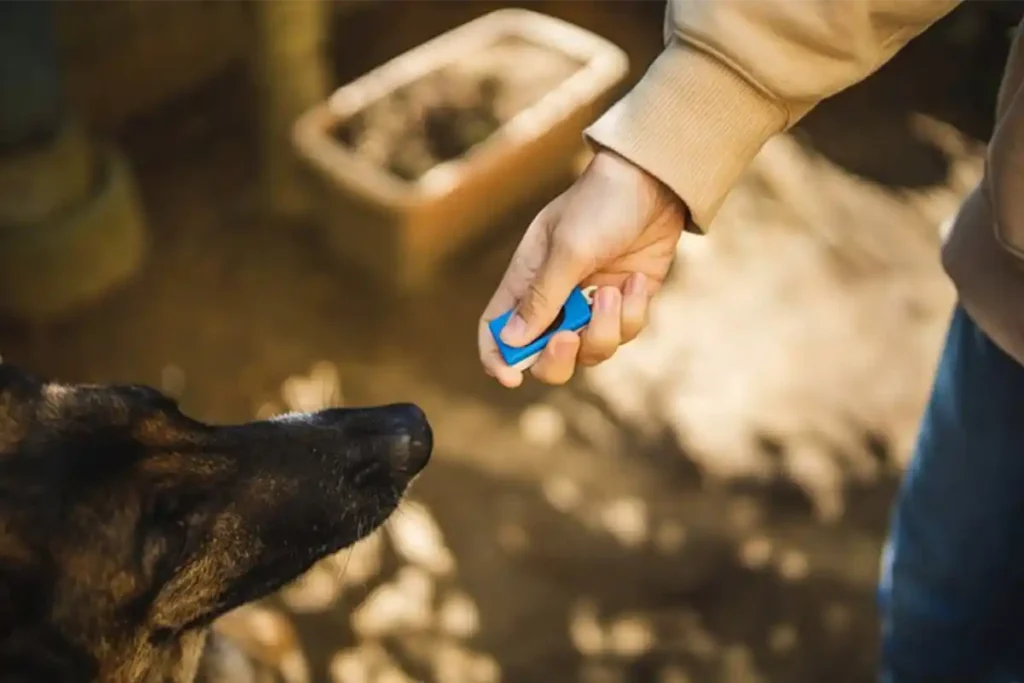
Tools and Resources for Successful Training
Having the right tools and resources can make dog training more efficient, engaging, and enjoyable for both you and your dog. In this section, we’ll explore essential training tools, modern apps, and enrichment toys that enhance the learning process.
Recommended Tools
1. Clickers
- Why It’s Useful: Clickers provide a clear, consistent signal that helps your dog associate the desired behavior with a reward.
- How to Use:
- Start by pairing the clicker sound with a treat during initial training.
- Click immediately when your dog performs the desired behavior, then reward them.
- 🐶 Pro Tip: Clicker training is especially effective for precision in teaching advanced commands like “Heel” or “Wait.”
- 🐾Example: Use a clicker to reinforce quick responses during recall training (“Come”).
Clickers are invaluable for building clarity in communication. They provide a distinct marker that accelerates learning,” says Dr. Esther Knoetze, BSc, BVSc.
2. Leashes and Harnesses
- Why It’s Useful: Proper leash and harness setups ensure safety and control during walks and outdoor training sessions.
- Types to Consider:
- No-Pull Harnesses: Ideal for managing leash pulling.
- Adjustable Leashes: Great for offering flexibility during off-leash training.
- 🐶 Pro Tip: Use a hands-free leash for active training like jogging or hiking.
- 🐾 Scenario: A no-pull harness can prevent distractions during walks and help reinforce the “Heel” command.
Modern Training Tools
1. Training Apps
- Why It’s Useful: Apps provide step-by-step guidance, progress tracking, and solutions for common challenges.
- Top Picks:
- Pupford: Includes video tutorials and a reward-based training program.
- Dogo: Offers interactive challenges and a progress tracker.
- 🐶 Pro Tip: Use app reminders to maintain a consistent training schedule.
2. Video Tutorials
- Why It’s Useful: Watching demonstrations helps you replicate proper training techniques at home.
- Recommended Sources:
- Tailwaggors’ upcoming YouTube channel for practical, step-by-step guides.
- Certified trainers’ videos for advanced tricks like agility training.
Enrichment Toys
Why They Matter:
- Enrichment toys prevent boredom, reduce anxiety, and keep your dog mentally stimulated while reinforcing positive behaviors.
Popular Options:
- Puzzle Feeders:
- Great for keeping your dog occupied while also challenging their problem-solving skills.
- Example: Use a puzzle feeder during mealtimes to slow down fast eaters and engage their minds.
- Snuffle Mats:
- Encourages natural foraging behavior, offering mental stimulation.
- Scenario: Introduce a snuffle mat during crate training to create a positive association.
- Kong Toys:
- Ideal for stuffing with treats or frozen goodies, providing long-lasting engagement.
- Pro Tip: Use frozen peanut butter or yogurt in a Kong to keep your dog entertained for hours.
Interactive toys like puzzle feeders are more than fun—they build problem-solving skills and reduce unwanted behaviors caused by boredom,” explains Dr. Knoetze.
Pair training with grooming to keep your dog happy and healthy: How to Bathe a Dog: Expert Tips for Stress-Free Grooming.
Table: Comparing Training Tools
| Tool | Best For | Pro Tip |
|---|---|---|
| Clicker | Precision in marking behaviors | Pair with high-value treats for faster learning. |
| No-Pull Harness | Managing leash pulling | Use consistent corrections during walks. |
| Puzzle Feeder | Mental stimulation | Rotate toys weekly to maintain interest. |
| Pupford App | Structured training plans | Follow video tutorials for progressive learning. |
| Kong Toy | Reward-based play | Freeze peanut butter for long-lasting fun. |
Your Dog Training Toolkit
Clicker
Precise timing tool for marking desired behaviors.
Best For:
- Teaching “Sit” and “Stay”
- Capturing exact moments
- Marking precise behaviors
Treat Pouch
Quick access to rewards during training sessions.
Best For:
- Reward-based training
- Walk training
- Quick reinforcement
Training Leash
6ft leash for controlled training and walks.
Best For:
- Heel training
- Loose leash walking
- Distance control
Training Toys
Interactive toys for engagement and rewards.
Best For:
- Mental stimulation
- Reward motivation
- Play-based training
Tools & Commands Connection
↓
Sit, Stay, Come↓
Heel, Walk, Leave it↓
Fetch, Drop it, Focus“The right tools simplify training, making it more effective and fun for both you and your dog.”
Equipping yourself with the right tools ensures smoother training sessions and happier dogs. Tailor your toolkit to your dog’s unique needs and preferences, and don’t forget to explore new resources like apps and enrichment toys to keep things fresh and engaging.
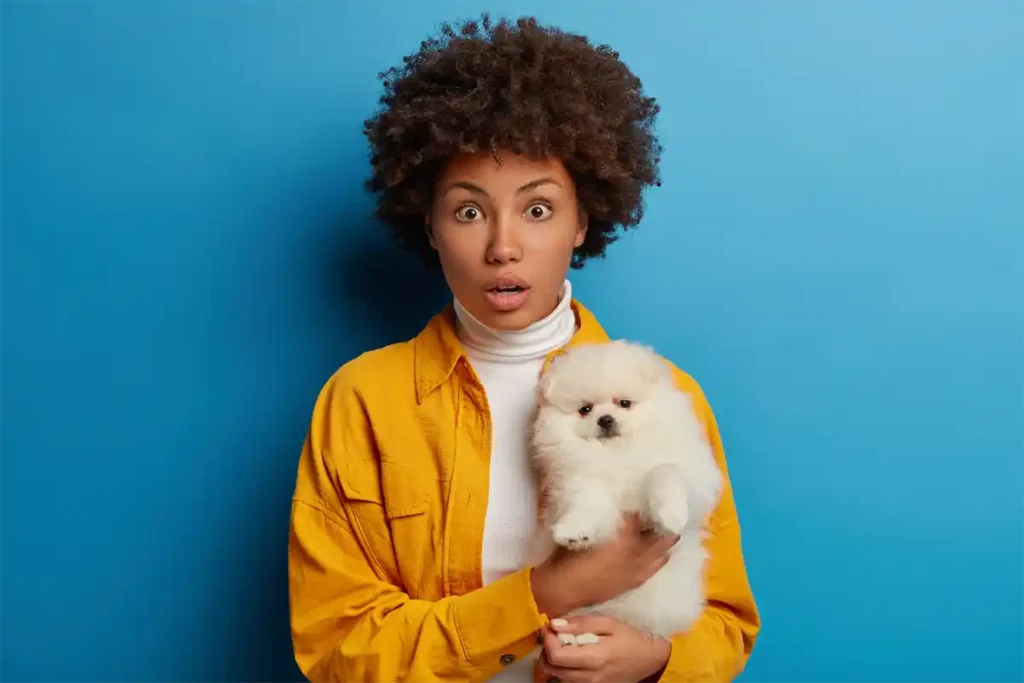
FAQs for Pet Parents
Dog training can feel overwhelming, especially for first-time pet parents. To make the process more approachable, here are answers to some of the most frequently asked questions about dog training. These insights will help you navigate challenges, stay consistent, and build a positive training environment.
How long does it take to train a dog?
+The time required for training depends on several factors, such as your dog’s age, breed, temperament, and the commands being taught. Basic commands like “Sit” and “Stay” can take 1–2 weeks with daily practice, while advanced commands may take several weeks to master. Puppies are quick learners but require shorter sessions, whereas adult dogs may take longer but can learn with patience and persistence.
Expert Insight: “Training is a journey, not a sprint. Focus on steady progress rather than immediate perfection,” advises Dr. Esther Knoetze, BSc, BVSc.
What if my dog doesn’t respond to treats?
+Not all dogs are motivated by food. Alternative rewards like toys, verbal praise, or playtime can be just as effective. Experiment with different rewards to discover what excites your dog most. High-energy breeds often prefer playtime, while others might respond better to gentle petting or vocal praise.
When should I seek help from a professional trainer?
+If you’re facing persistent challenges or have specific goals for your dog, a professional trainer can provide valuable guidance. Behavioral issues like aggression, leash reactivity, or excessive barking, lack of progress despite consistent training, and specialized goals like therapy or service dog certification are good indicators that professional help may be beneficial.
Is crate training effective?
+Crate training is a valuable tool for house training, safety, and providing your dog with a secure space. It prevents access to harmful items, helps with potty training, and ensures safety during travel. Introduce the crate gradually with positive reinforcement, making it a cozy space with blankets, toys, and treats. Never use the crate as a punishment.
Pro Tip: “The crate should feel like a safe haven, not a jail. Use patience and positive reinforcement to build a positive association,” says Dr. Knoetze.
How can I stop my dog from pulling on the leash?
+Leash pulling can be addressed with proper equipment like no-pull harnesses, consistent techniques like the “Stop and Wait” method, and gradual exposure to distractions. Start leash training in calm environments and reward your dog for calm behavior. Patience and consistency are key.
1. How long does it take to train a dog?
The time required for training depends on several factors, such as your dog’s age, breed, temperament, and the commands being taught. Here’s a general breakdown:
- Basic Commands: “Sit” and “Stay” can take 1–2 weeks with daily practice.
- Advanced Commands: Behaviors like “Heel” or “Leave It” might take several weeks to master, depending on distractions and training consistency.
- Puppies vs. Adults:
- Puppies: Quick learners but require shorter sessions due to limited attention spans.
- Adults: May take longer but are fully capable of learning new commands with patience and persistence.
Training is a journey, not a sprint. Focus on steady progress rather than immediate perfection,” advises Dr. Esther Knoetze, BSc, BVSc.
2. What if my dog doesn’t respond to treats?
Not all dogs are motivated by food, but that doesn’t mean training is off the table. Alternative rewards can be just as effective:
- Toys: A squeaky toy or a game of tug-of-war can be powerful motivators.
- Praise: Many dogs thrive on verbal affirmations like “Good boy!” or “Yes!”
- Playtime: Incorporate short play sessions as a reward for completing commands.
Pro Tip: Experiment with different rewards to discover what excites your dog most. High-energy breeds often prefer playtime, while others might respond better to gentle petting or vocal praise.
3. When should I seek help from a professional trainer?
If you’re facing persistent challenges or have specific goals for your dog, a professional trainer can provide valuable guidance. Here are some indicators that professional help may be beneficial:
- Behavioral Issues: Aggression, leash reactivity, or excessive barking.
- Lack of Progress: If consistent training doesn’t lead to improvements.
- Specialized Goals: Advanced training for therapy or service dog certification.
Scenario: If your dog pulls on the leash despite trying no-pull harnesses and “Stop and Wait” methods, a trainer can help identify underlying triggers and tailor a solution.
Learn more about behavioral red flags that may require professional attention.
4. Is crate training effective?
Crate training, when done correctly, is a valuable tool for house training, safety, and providing your dog with a secure space.
- Benefits:
- Safety: Prevents your dog from accessing harmful items when unsupervised.
- House Training: Dogs naturally avoid soiling their sleeping area, making crates effective for potty training.
- Travel: Crates ensure safety during car rides and flights.
- Tips for Success:
- Introduce the crate gradually with positive reinforcement.
- Make the crate a cozy space with blankets, toys, and treats.
- Never use the crate as a punishment.
Pro Tip: “The crate should feel like a safe haven, not a jail. Use patience and positive reinforcement to build a positive association,” says Dr. Knoetze.
Crate training can help prevent behavioral issues that may signal health concerns. Discover the 11 Warning Signs You Should Take Your Dog to the Vet.
5. How can I stop my dog from pulling on the leash?
Leash pulling is a common challenge, but consistent techniques and the right tools can make a difference.
- Proper Equipment: Use a no-pull harness to reduce pulling without causing discomfort.
- “Stop and Wait” Method: When your dog pulls, stop walking. Wait until they return to your side, then reward and resume.
- Gradual Exposure: Begin leash training in distraction-free environments before progressing to busy streets.
Scenario: If your dog lunges at a squirrel during a walk, calmly stop, redirect their focus with a treat, and reward calm behavior.
Additional Tips for Success
- Be Patient: Every dog learns at their own pace. Celebrate small milestones and build from there.
- Stay Consistent: Use the same commands, tone, and hand signals to avoid confusing your dog.
- Make It Fun: Keep sessions engaging with games and rewards to maintain your dog’s enthusiasm.
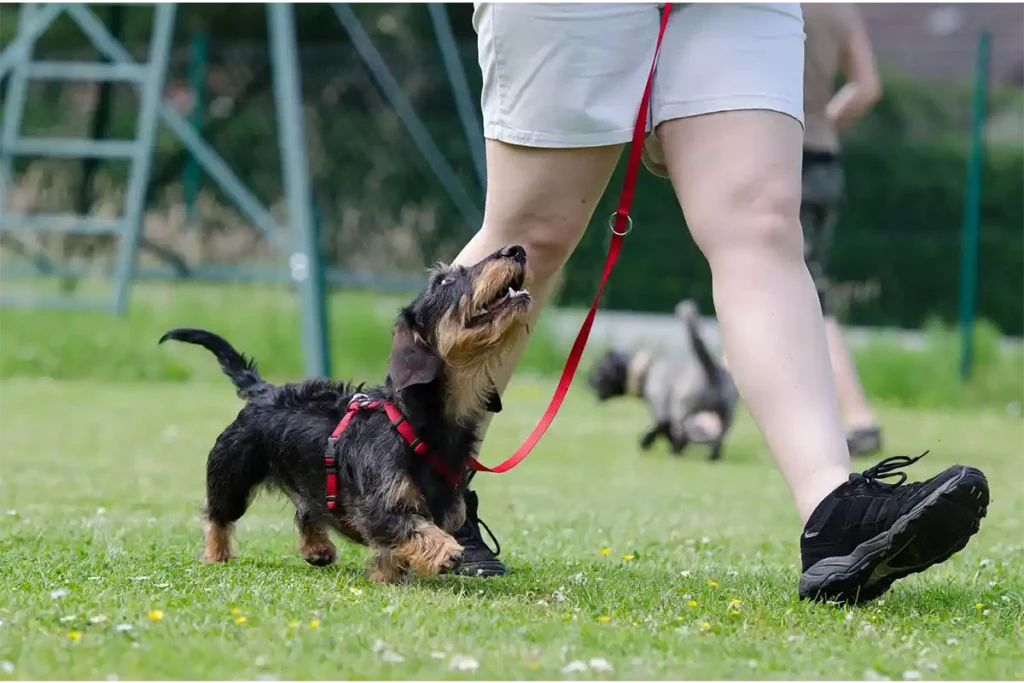
Wrapping Up
Dog training is a rewarding journey that strengthens the bond between you and your furry companion while ensuring a safe and harmonious relationship. Whether you’re working on basic commands, tackling behavioral challenges, or exploring advanced training techniques, consistency, patience, and the right tools are your greatest allies.
For more tips on keeping your dog happy and fulfilled, visit our guide: 9 Simple Ways to Make Your Dogs Happy: Vet-Approved Tips.
Key Takeaways
- Training Benefits:
- Builds trust, improves communication, and enhances safety for your dog.
- Prevents unwanted behaviors while promoting mental and physical well-being.
- Mastering Commands:
- Start with essential commands like “Sit,” “Stay,” “Come,” and “Leave It.”
- Progress to advanced commands like “Heel” and “Wait” to enrich your dog’s learning experience.
- Structured Routine:
- A balanced daily schedule ensures consistent progress and keeps your dog engaged.
- Tailor your routine to your dog’s breed, age, and energy level.
- Tools and Resources:
- Equip yourself with effective tools like clickers, no-pull harnesses, and enrichment toys.
- Leverage modern training apps and video tutorials to stay on track.
- Addressing Challenges:
- Use troubleshooting techniques to manage resistance, distractions, and leash pulling.
- Seek professional guidance if needed for persistent issues or specialized training.
- FAQs and Expert Advice:
- Keep learning through expert-backed resources and community engagement.
- Remember that progress is a step-by-step process, not an overnight transformation.
Everything You Need to Succeed in Dog Training
Essential Commands
- ☐ Master “Sit” and “Stay”
- ☐ Perfect “Come” (Recall)
- ☐ Learn “Leave It”
- ☐ Practice “Heel”
Training Tools
- ☐ Clicker for precise timing
- ☐ Treat pouch for rewards
- ☐ No-pull harness
- ☐ Enrichment toys
Daily Schedule
- ☐ Morning exercise & training
- ☐ Afternoon mental stimulation
- ☐ Evening review & bonding
- ☐ Consistent bedtime routine
Training Tips
- ☐ Keep sessions short & fun
- ☐ Use positive reinforcement
- ☐ Be consistent with commands
- ☐ Celebrate small victories
“Training is a journey, and every step brings you closer to a stronger bond with your dog.”
Final Note
Dog training is as much about building a relationship as it is about teaching commands. Celebrate small victories, stay consistent, and remember: every moment spent training is an investment in your dog’s happiness and well-being.
Training isn’t just about obedience—it’s about fostering a connection that lasts a lifetime,” says Dr. Esther Knoetze, BSc, BVSc.
Learn the Art of Dog Training—A Comprehensive Guide to Building Trust and Joy! 🐕✨
🐾✨ Expert tips from Dr. Esther Knoetze and proven strategies make this your ultimate training resource.
Share with fellow dog parents and join our community of successful trainers! 🦮❤️


